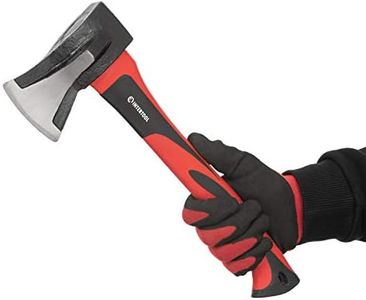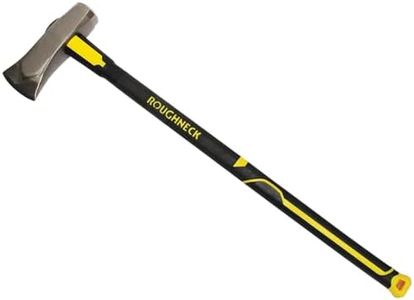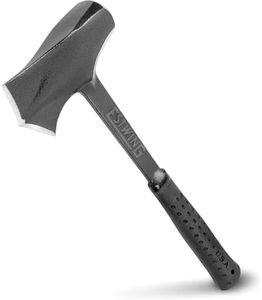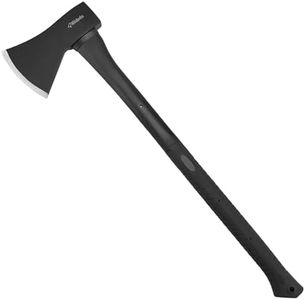We Use CookiesWe use cookies to enhance the security, performance,
functionality and for analytical and promotional activities. By continuing to browse this site you
are agreeing to our privacy policy
10 Best Splitting Maul
From leading brands and best sellers available on the web.By clicking on a link to a third party's website, log data is shared with that third party.
Buying Guide for the Best Splitting Maul
Choosing a splitting maul is about matching the tool to both your physical ability and the type of wood you plan to split. A splitting maul is designed to split logs rather than cut them, with a broad wedge-shaped head that delivers forceful blows to split wood fibers apart. When selecting a splitting maul, consider how much wood you need to process, what sizes of logs you will tackle, and how comfortable you are wielding heavier tools for extended periods. By understanding the key specifications, you’ll find a splitting maul that's safe, efficient, and comfortable for regular use.Head WeightHead weight refers to how heavy the metal part of the maul is, usually measured in pounds or kilograms. This matters because a heavier head hits harder, making it easier to split tough or large pieces of wood, but it can also be tiring or difficult to control if you're not used to swinging heavy tools. Lighter heads (around 4 to 6 pounds) are easier to swing multiple times, good for smaller logs and those who favor endurance over brute force. Heavier heads (8 pounds and up) are more powerful for big, knotty logs but demand more strength and stamina. Choose a head weight that matches your physical strength and the size/hardness of the wood you usually split.
Handle LengthHandle length determines leverage and safety. Longer handles (typically 32 to 36 inches) give you more swinging power and keep your hands farther from the log, reducing the risk of injury. However, long handles can be unwieldy in tight spaces or for shorter users. Shorter handles (28 to 32 inches) offer more control and are easier to use for beginners or in cramped environments, but provide slightly less force. Pick a length that feels comfortable for your height and working area; generally, if you are tall or splitting large logs outdoors, a longer handle is ideal, but for smaller users or limited spaces, shorter handles are easier to manage.
Handle MaterialHandle material influences durability, weight, shock absorption, and cost. Common options are wood (usually hickory), fiberglass, and sometimes steel. Wooden handles offer a traditional feel and absorb shock well, but can break if misused or not well-maintained. Fiberglass handles are durable and resistant to weather, plus they often dampen vibrations, making them comfortable for prolonged use. Steel handles are the strongest but tend to be heavier and transmit more shock to your hands. Choose a handle material that suits your comfort preference, willingness to maintain the tool, and frequency of use.
Head ShapeThe head shape affects splitting efficiency. Classic splitting mauls have a broad, wedge-shaped head that forces wood fibers apart as you strike. Some models have a slightly rounded or concave design to help prevent sticking in the log. The cheeks (sides) of the wedge might also flare outward for even more splitting action. If you mostly split straight-grained wood, a standard wedge works well, but if you handle a lot of knotty or stringy logs, look for a head with extra flaring or anti-stick features.
Overall BalanceBalance is about how the tool feels when you swing it—it should neither feel top-heavy nor hard to control. Good balance allows you to deliver strong, safe swings with less fatigue or risk of missing your aim. Test the balance by holding the maul and practicing a few mock swings if possible. If the head feels too heavy or the handle too light or unwieldy, you may want to try another model. Pick a maul that feels steady and natural as you swing, suited to your physical build and technique.
Grip and ComfortGrip and comfort are about how securely and comfortably you hold the maul. Handles may have textured or rubberized grips, or be shaped to fit the hand better. A good grip prevents slipping, especially in sweaty or wet conditions, and lessens hand fatigue. If you plan on extended splitting sessions, look for ergonomic or cushioned grips to protect your hands and keep your hold secure. Always pick a tool that feels comfortable and safe in your hands.














